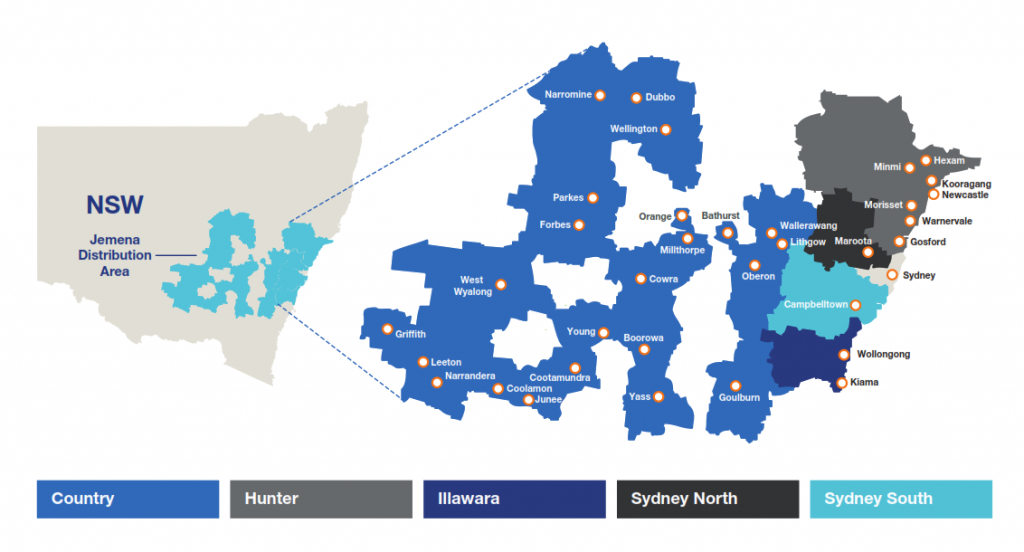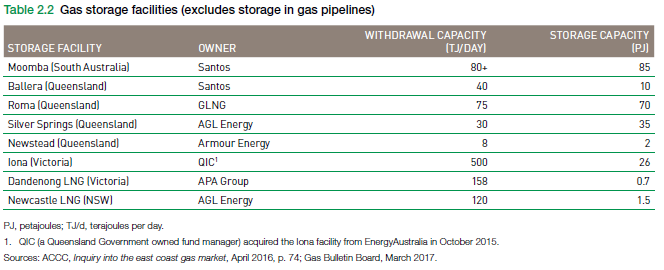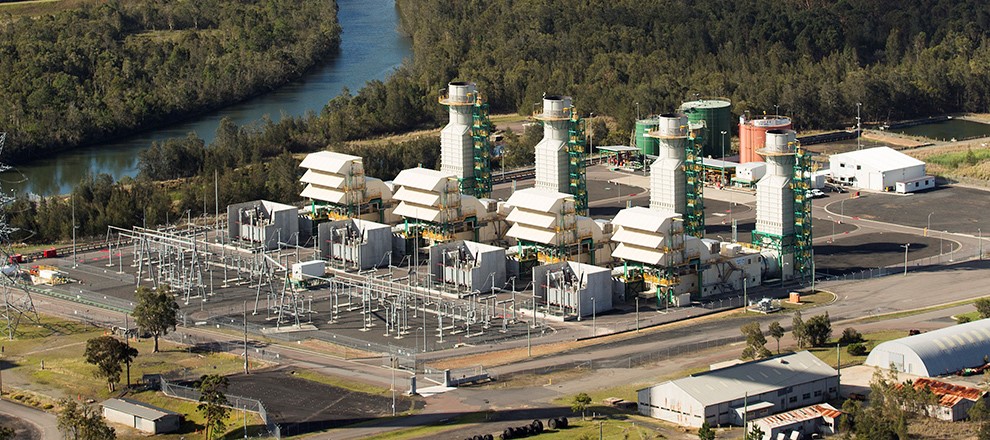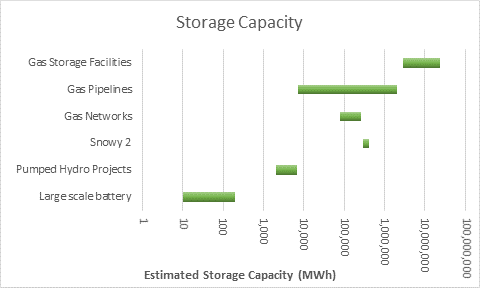Energy Storage: we can be happy underground
In this week’s second part of our exploration of storage in gas networks and the role they can play in our energy future, we look at decarbonisation and case studies demonstrating how gas networks’ functionality is already being applied to provide solutions. (See part one here)
Gas distribution networks – the science
The pressure in gas distribution networks also acts as a storage mechanism. Jemena[1] estimates that the NSW network has a storage capacity of about 80 GWh – equivalent to 12.5 million PowerWall batteries – more than one for each Australian household. Across the 1.3 million connections in the NSW network, the total annual consumption for gas is equivalent to 7,406 GWh. The storage capacity in the network is sufficient to provide gas for around 4 days[2] to NSW customers.

Jemena Gas Network
NSW has approximately 30% of the national gas distribution networks[3]. Extrapolating the storage capacity of the NSW network across the nation results in over 260 GWh of energy storage in the existing gas networks.
Gas transmission pipelines
Australia has more than 37,000 km of natural transmission pipelines that efficiently transport gas under very high pressure from where it is produced to the outskirts of cities large and small[4]. Every molecule of gas used in Australia travels at least part of the way to its destination in a transmission pipeline. While these pipelines connect gas supplies to customers, they also provide a massive storage opportunity. For example:
“The Tasmanian Gas Pipeline in 2017 offered on its website a facility to store over 150 terajoules of gas in its pipeline, which could later be drawn on for sale into the Victorian market at times of peak demand.”[5]
Major gas pipelines criss-cross the country and range between 127 km to more than 2,000 km in a range of diameters, operating pressures and capacities. The Tasmanian Pipeline is 734 km long. Using the capacity of this pipeline as a guide, the storage potential for individual pipelines ranges between 26 TJ to 410 TJ, or if all of the pipelines are included, a total of 7,152 TJ, or almost 2,000 GWh, which is roughly 8 times as much as the storage of Australia’s gas distribution networks . In comparison, this is more than five times the storage capacity of Snowy 2.0. Even better, the gas transmission network already exists and is operational. What needs to be determined, however, is its future role in energy storage.
Gas storage facilities
Produced gas is also stored in specialised facilities that manage seasonal demand. These facilities are connected by gas pipelines. Many are subterranean and some liquefy the natural gas for storage in tanks. The AER shows that storage facilities range between 10 and 85 PJ of gas, totaling over 230 PJ nationally, being an order of magnitude greater than the high pressure pipeline network. This is comparable storage capacity of 500,000 Hornsdale batteries[6] and the infrastructure already exists.

In total, Australia’s gas infrastructure including gas distribution networks, the high pressure pipeline network and dedicated gas storage facilities are able to store vast amounts of energy.
A practical example of gas storage
Gas is often used to support the electricity network during peak times. The Colongra plant uses four flexible and low emission dual fuel gas turbines producing a total of 667 MW of electricity. Gas turbine generation produces 40 per cent less greenhouse gas emissions than equivalent coal fired generation. The turbines start up quickly at short notice to supply electricity during times of high demand.

This plant is supplied by a dedicated pipeline that stores enough gas to run the station at full capacity for five hours. The existing Sydney to Newcastle gas supply cannot meet the peak demand of the power station so the Colongra pipeline is designed to be pressured over a 24 hour, off peak period until the power station is brought on line during peak periods. This pipeline provides 3,300 MWh of energy storage.
But what about decarbonisation?
Gas is already a lower greenhouse energy solution compared with electricity. As emissions from electricity generation decrease over time, so will emissions from gas through deployment of biogas and hydrogen from renewables. The existing infrastructure will be able to operate with these renewable gases, creating a massive renewable energy storage resource across the country, though some augmentation to store hydrogen in this infrastructure will be needed.
While Australia continues to talk about advanced energy storage solutions that will cost many millions if not billions of dollars, consideration should be given to the energy storage infrastructure already in place. Natural gas infrastructure has a storage capacity of almost 200 times the additional storage capacity of Snowy 2.0. And it is already constructed and operational without requiring an additional $5 billion for each “Snowy 2.0” and a potential further $2Billion for transmission upgrades. The case for better utilisation of Australia’s energy infrastructure (combining gas and electricity infrastructure) multifunctional design is strong. We should be designing solutions that enable our existing assets work harder and smarter.

Major energy investment decisions should focus on outcomes for customers. Optimising the use of existing infrastructure and identifying synergies between the gas and electricity sectors may lead to better long term investment decisions resulting in cost efficiencies and better value for money for energy customers.
[1] Sycamore (2017), Innovation projects: Power to Gas in NSW – a presentation at Gas Seminar 2017, accessed from http://www.energynetworks.com.au/files/12._gabrielle_sycamore.pdf
[2] Note that gas consumption varies between seasons – so the network capacity may be able to provide more than 4 days of gas during low demand but less than four days during peak periods of high demand, e.g. winter.
[3] There are 90,459km of gas distribution mains in Australia. See Energy Networks Australia (2017), Reliable and clean gas for Australian homes. .
[4] http://www.apga.org.au/industry/facts-and-figures-about-pipelines-and-gas/about-pipelines-australias-gas-transmission-pipeline-system/
[5] Australian Energy Regulator (2017), State of the Energy Market May 2017, pg 71.
[6] Media reports indicate the Hornsdale battery cost between $33 and $50 million.


